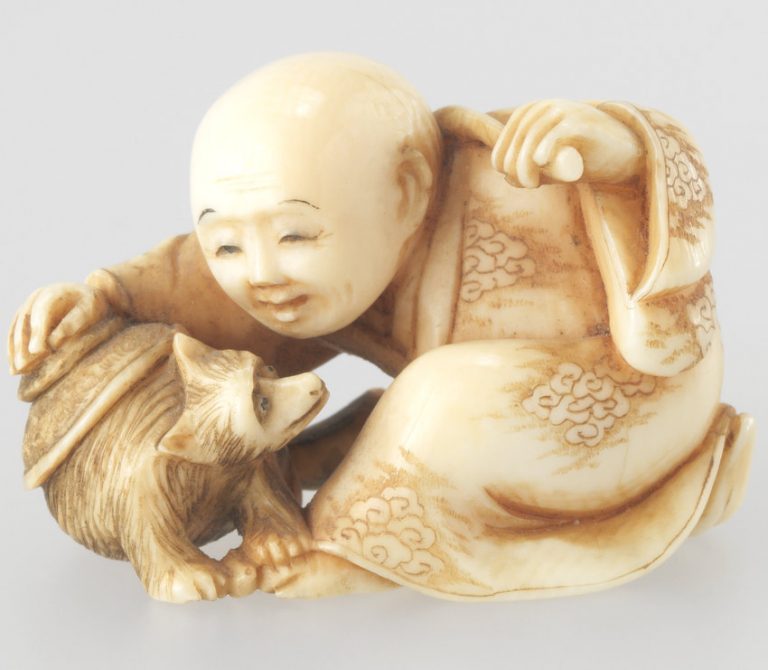We acknowledge the Traditional Owners of the land on which the Queensland Art Gallery | Gallery of Modern Art stands and recognise the creative contribution First Australians make to the art and culture of this country.

Shuho / Japan b. unknown / Netsuke: (child playing with a puppy) 19th century / Carved ivory with inset red lacquer / 2.8 x 3.5 x 2cm / Bequest of Karl and Gertrude Langer 1985 / Collection: Queensland Art Gallery | Gallery of Modern Art
SHUHONetsuke: (child playing with a puppy) c.1800
Not Currently on Display
The small carvings known as netsuke epitomise several important aspects of Japanese art and culture. They have fascinated people around the world since Japan increased commerce with the West in the 1860s.
This humble accessory, which secured the wearer’s personal belongings to the sash or belt (obi) of their kimono, expresses the refinement of traditional carving techniques, the artists’ understanding of the medium, and variously portrays mythical, spiritual, customary and natural subjects.
The Queensland Art Gallery holds a collection of 92 netsuke, formerly the prized possessions of Dr Gertrude Langer (1908–1984), one of Australia’s leading 20th century art critics and intellectuals.
In prewar Europe, netsuke and other Japanese crafts were highly sought after, as detailed in Edmund de Waal’s 2010 book The Hare with Amber Eyes. De Waal describes his Jewish family’s prized collection of netsuke being collected in Paris, travelling with them across Europe, and then displaced as the family fled war-torn Austria in the 1930s.
This netsuke took a similar journey: collected in Vienna by Dr Gertrude Langer, she brought it, among many others, to Australia after Hitler’s annexation of Austria in 1938.
Discussion Questions
1. If you could have only three precious objects in your possession, what would they be? Why are these objects so important to you?
2. Reflect on the ornamentation you or your friends wear as a statement about who you are and where you come from.
Classroom Activities
1. Look closely at the netsuke and draw what you see. How do the elements interact?
2. This carved netsuke depicts a playful scene of a child with a puppy. Try redesigning the image using the same elements of child and puppy but changing the posture and expressions to create a sense of the grotesque or the mythical.